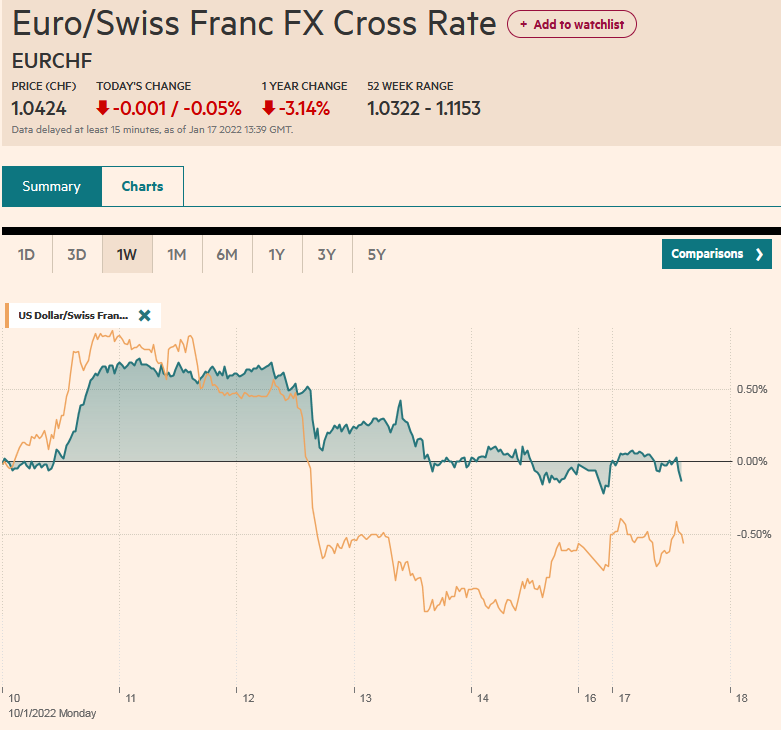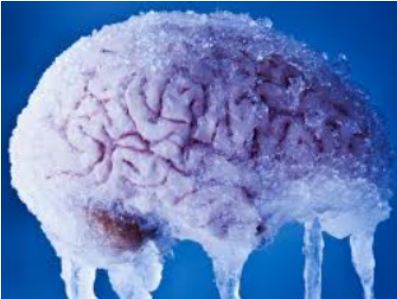(Combining the weekend macro commentary and price action review in one note. Check out the July monthly.) Three economic reports highlight the week ahead: Japan's labor cash earnings at the start of the week and the US employment report and China's CPI at the end of the week. In addition, the Reserve Bank of Australia meets early on July 5. The Bank of Japan's insistence that inflation, which is running slightly above target is not sustainable is that it is a function of higher fresh food and energy prices and the statistical impact of last year's cut in cell phone charges dropping out of the 12-month comparisons. What is missing, the BOJ says is wage growth. Over the last decade, monthly cash earnings have risen by more than 2% year-over exactly twice: once in
Topics:
Marc Chandler considers the following as important: 4.) Marc to Market, 4) FX Trends, China, Featured, Federal Reserve, Japan, jobs, Labor, macro, newsletter, RBA, USD
This could be interesting, too:
Nachrichten Ticker - www.finanzen.ch writes Die Performance der Kryptowährungen in KW 9: Das hat sich bei Bitcoin, Ether & Co. getan
Nachrichten Ticker - www.finanzen.ch writes Wer verbirgt sich hinter der Ethereum-Technologie?
Martin Hartmann writes Eine Analyse nach den Lehren von Milton Friedman
Marc Chandler writes March 2025 Monthly
(Combining the weekend macro commentary and price action review in one note. Check out the July monthly.)
Three economic reports highlight the week ahead: Japan's labor cash earnings at the start of the week and the US employment report and China's CPI at the end of the week. In addition, the Reserve Bank of Australia meets early on July 5.
The Bank of Japan's insistence that inflation, which is running slightly above target is not sustainable is that it is a function of higher fresh food and energy prices and the statistical impact of last year's cut in cell phone charges dropping out of the 12-month comparisons. What is missing, the BOJ says is wage growth. Over the last decade, monthly cash earnings have risen by more than 2% year-over exactly twice: once in 2018 and once in 2014. In the first four month of the year, labor cash earnings averaged 1.4% year-over-year pace. The average rate last year was 0.4%. We also note that the initial estimate is subject to statistically significant revisions. Consider that April's 1.7% increase first reported was revised to 1.3%. The revision in March went the other way. The 1.2% rise originally reported was revised to 2.0%.
Still, knowing wage growth does not help much in forecasting consumption (household spending). This is especially true given the pandemic. April was the first full month without Covid curbs. When adjusted for inflation, real cash wages fell to 16-month lows in April (1.7% year-over-year, initially -1.2%). In stark contrast to the UK, where Bank of England Governor Bailey urged workers to show restraint in wage negotiations, the BOJ and the government have called on Japanese companies to boost wages. Price pressures may not have persuaded the BOJ to hike rates, but Prime Minister Kishida moved to help the cost-of-living squeeze by offering a package of government spending and some tax breaks and subsidies for gasoline.
A robust labor market, strong consumption, and a positive terms-of-trade shock, and elevated inflation expectations has pushed the Reserve Bank of Australia on to an aggressive tightening course. At the end of last year, the cash rate futures implied a year-end target rate of about 0.8%. Six-month later, the cash target rate is at 0.85% and the market is pricing in a year-end rate of 3.20%. This is a pullback from almost 4% reached in mid-June. RBA Governor Lowe pushed against speculation of a 75 bp move by saying the discussion will be between a 25 bp and 50 bp move at the July 5 meeting. The market’s confidence of a 50 bp move has waned. Ahead of the weekend, the futures market's slight bias in favor of a half-point move is the least in three weeks.
The Federal Reserve's assessment that the US economy can withstand tighter financial conditions without falling in a recession seems largely based on the strength of the labor market. Cracks are beginning to appear. We have noted that the four-week moving average of weekly jobless claims, used to smooth some of the noise in this high-frequency has bottomed three months ago and has risen by 30%. The labor market is down shifting. Non-farm payrolls have grown by an average of 488k a month this year. The median forecast in Bloomberg's survey forecasts a 250k increase in June, which would the lowest since the end of 2020.
The Federal Reserve, like other central banks, sees the tightness of the labor market fueling wage increases that in turn is thought to drive prices. The cracks in the "robust labor market" narrative are also seen in average hourly earnings. It is expected to have slipped to 5.1% in June. If borne out in the report, it would have slowed every month in Q2. The monthly change also is stabilizing between 0.3% and 0.4%. The cumulative gain in the second quarter could be the lowest since Q1 21.
Jobs are income, and income funds consumption. Fewer new workers and average earnings slowing could be expected to translate into slower consumption. However, Americans have been borrowing from the past as in drawing down savings and monetizing the increase in equity in their homes, and from the future in terms of credit. May's consumer credit will be reported a few hours after the jobs data. Total consumer credit jumped by almost $85.5 bln in March and April. It was nearly evenly divided by revolving (e.g., credit cards) and non-revolving (e.g., auto loans and school loans) credit. With consumption (in Q1 GDP and April PCE) being revised lower, and the softer than expected May PCE estimate (0.2% vs. 0.4%) credit fueled a larger share than it previously appeared.
At the end of the week, literally, Saturday morning (July 9) in Beijing, China is expected to announce the June CPI. The re-opening of the economy is expected to have lifted prices, though they softened (-0.4%) in May. The median forecast is for an increase in the year-over-year rate to 2.5% from 2.1%. That would be the highest since July 2020. What makes China's CPI particularly difficult to forecast is that officials have not revealed composition after last year's adjustment. For example, middle income countries tend to give more weight to food and clothes, while high income countries typically put more weight on transportation and shelter, which have been more central to the inflation story. Chinese officials seem confident that inflation will remain below 3%.
Food prices, which fell 1.3%, were behind the month-over-month CPI decline in May. The re-opening and logistics stabilized, and fresh vegetable prices tumbled by 15%. The price of pork, a key component in the food basket, fell by more than a fifth in May. Many accounts express concern that pork prices have bottomed. The re-opening means consumption will likely rebound. Supply seems constrained as live hog futures in Dalian are the strongest in a year and wholesale prices are at six-month highs.
Let us turn to the assessment of the price action.
Dollar Index: Heightened concerns of a recession, the drop in US yields, and increased confidence that the Fed will cut rates late next year had little impact on the US dollar. The Dollar Index, which began the last week with A dip below 104.00, finished at its best level in a couple of weeks. Indeed, it approached the 20-year high set in mid-June near 105.80. The momentum indicators appear to be turning up after pullback to the middle of the range. The next important technical area is not until the 108.75-109.25 area, which was last seen August-October 2002. Initial support is now seen around 104.70. Note that the Fed funds futures are pricing in a quarter point cut in Q3 23 and another in Q4 23. The Altanta Fed's GDPNow tracker warns of a 2.1% contraction, yet none of the 58 economists in Bloomberg's survey are forecasting a contraction (of course they can change their minds and we'll be tracking it).
Euro: The single currency's recovery faltered at $1.0615 last Monday, a key retracement objective of the sell-off that began with the ECB meeting on June 9. It did not look back and finished the week below $1.04. The June low was about $1.0360, and the May low was around $1.0350. The MACD and Slow Stochastic are turning back down after recovering since the middle of June. A break would renew speculation of a move to parity. The euro traded on both sides of the previous week's range and settled below its low. The outside down week underscores the fact that the bears are still in control.
Japanese Yen: The yen was the only major currency to post a gain against the greenback, though it is less than 0.2%. The key consideration was that the US 10-year yield fell more than 25 bp, the largest weekly drop since March 2020. Ahead of the weekend, the dollar briefly traded below the 20-day moving average (~JPY134.80) for the first time since June 1 and bounced back settling near JPY135.00. Signals from the momentum indicators are diverging. The MACD is trending lower, while the Slow Stochastic has flatlined at elevated levels. The dollar was more resilient than one might have expected. Nevertheless, the pullback in US rates should encourage a deeper dollar correction. On the current setup, a move toward JPY133 seems reasonable, with potential extending to around JPY130.50. Even if the dollar moves sideways in the coming days, the five-day moving average looks likely to fall below the 20-day moving average for the first time in a month.
British Pound: Sterling began last week edging above the previous week's high but was turned back from the $1.2230 area and was subsequently sold off. It dipped below $1.20 before the weekend to cap its biggest weekly loss (~2.2%) since September 2020. The lower Bollinger Band begins the new week near $1.1950 and the two-year low set last month was near $1.1935. The momentum indicators allow for further losses before becoming stretch. There seems little chart support ahead of the $1.1400-$1.1500 area. The swaps market remains nearly certain that the Bank of England will hike by 50 bp at their next meeting in early August.
Canadian Dollar: After the yen, the Canadian dollar was the best performer among the major currencies, falling only around 0.3% against the US dollar. The greenback initially extended its retreat from its best level since November 2020 (~CAD1.3080), falling to CAD1.2820. However, the risk-off meme saw the US dollar recover CAD1.2965 ahead of the weekend. The MACD appears to be poised to curl higher while the Slow Stochastic is still trending lower. While the market has downgraded the likelihood that the Fed hikes by 75 bp at this month's meeting to about 60%, the least since the FOMC meeting, the risk of the 75 bp move by the Bank of Canada is near 80%. The greenback faces nearby resistance in the CAD1.2980-CAD1.3020 band and beyond that is the old nemesis in the CAD1.3080 area.
Australian Dollar: Concerns about global growth and the broad US dollar strength saw the Australian dollar tumble to new two-year lows before the weekend near $0.6765. We previously noted that this area corresponds to the (50%) retracement of the Aussie's rally from the pandemic panic low around $0.5500. The next retracement (61.8%) is about $0.6465. However, a more bearish technical case can be made if the Aussie has carved out a head and shoulders topping pattern with the neckline around $0.7000. It projects to $0.6000. The lower Bollinger Band is near $0.6750. The MACD is falling and the Slow Stochastic has been chopping along the trough. A move above $0.6900-$0.6920 is needed to improve the technical tone. The futures market is pricing in almost a 60% chance of a 50 bp rate hike instead of a 25 bp move at the July 5 central bank meeting. Over the six meetings in H2, the RBA is expected to hike another 225 bp. This implies three half-point moves and three quarter-point moves.
Mexican Peso: The dollar formed a little bit of a shelf in the second half of last week in the MXN20.06-MXN20.08 range, off which it pushed higher and hit MXN20.4660 before the weekend. This seemed clearly part of risk-off move. The peso fell by around 0.9% at the end of last week even though the manufacturing PMI rose to 52.2 (from 50.6), its highest level since well before the pandemic. It was the fifth consecutive advance. The manufacturing PMI fell in most countries in June. Worker remittances in May soared to a new record high of $5.17 bln, almost $2.5 bln more than expected, and more than enough to cover the $330 mln deterioration of the trade balance. There were eight sessions in Q2 22 that the dollar traded above MXN20.50, but it closed above it once. Another push above there could spur gains towardMXN20.65-MXN20.70. The data highlight in the coming days is CPI report on July 7. An acceleration, which looks likely, may help solidify expectations for a 75 bp hike at its next meeting on August 11 meeting.
Chinese Yuan: The dollar spent last week trading quietly inside the previous week's range (~CNY6.6735-CNY6.7260). It settled near CNY6.7015, up about 0.15% on the week. Recall that the greenback surged in April and into the first half of May. It has been moving broadly sideways for the past month-and-a-half. Chinese officials seem content, but by shadowing the dollar, the yuan is strengthening against most other currencies. If part of the earlier pressure on the yuan was coming from portfolio flows, the outlook is brighter. As the Chinese economy recovers from the lockdowns, Chinese stocks have begun outperforming. And, at the same time, the pullback in US Treasury yields means that China's discount to the US has fallen from around 65 bp to less than 10 bp at the end of last week. The data highlights next week include the foreign exchange reserves, which probably fell on valuation grounds given the dollar's strength. Also, on tap is the May CPI (likely accelerated as the economy re-opened) and PPI, which is expected to have declined for the eighth consecutive month.
Tags: #USD,China,Featured,federal-reserve,Japan,jobs,Labor,macro,newsletter,RBA









